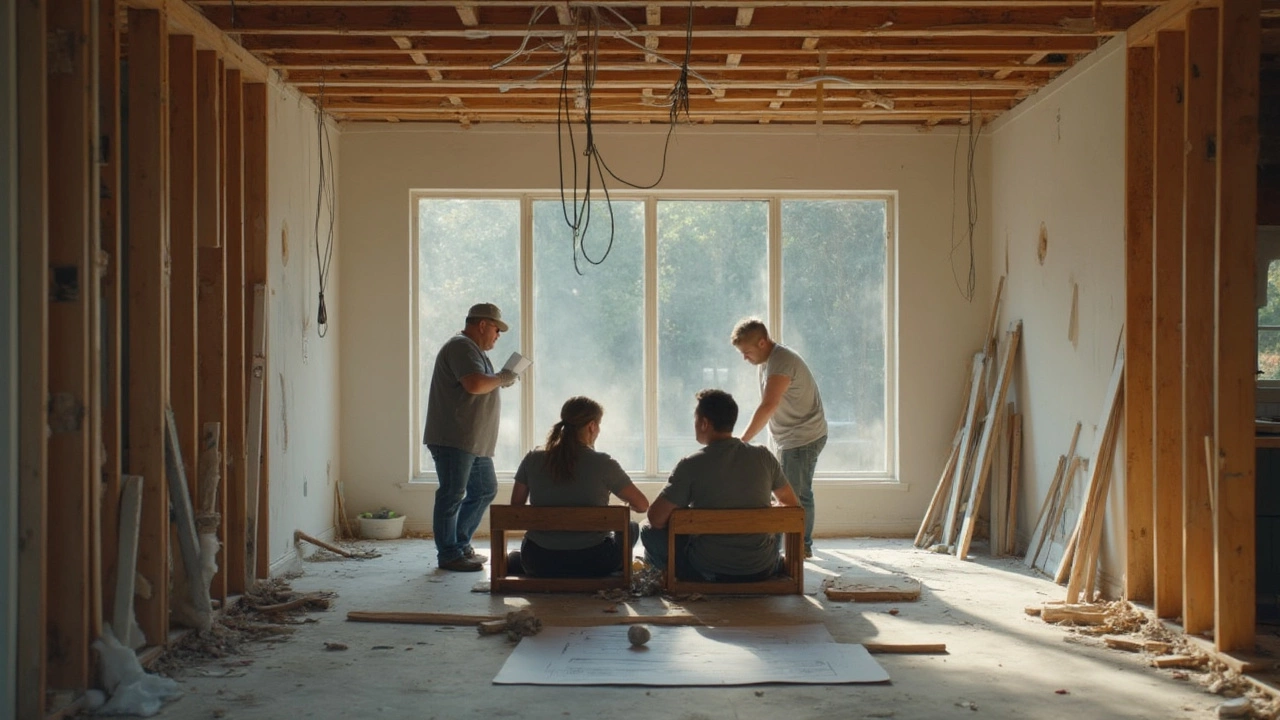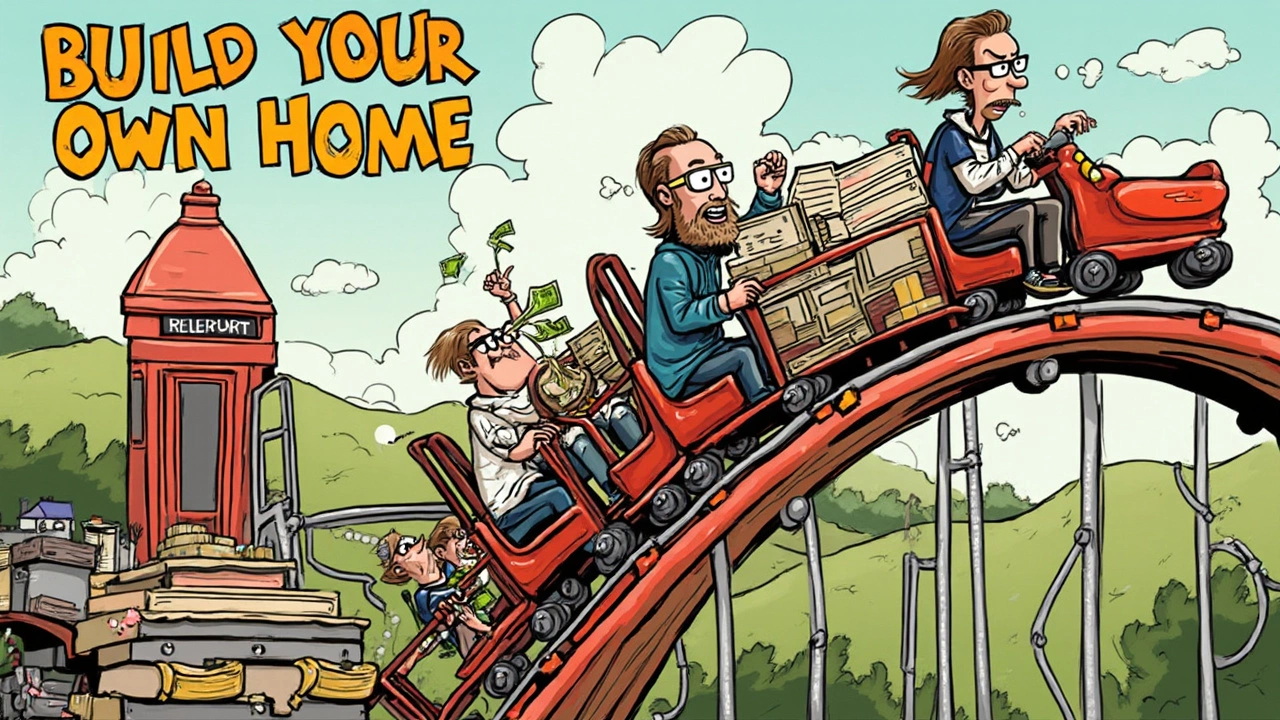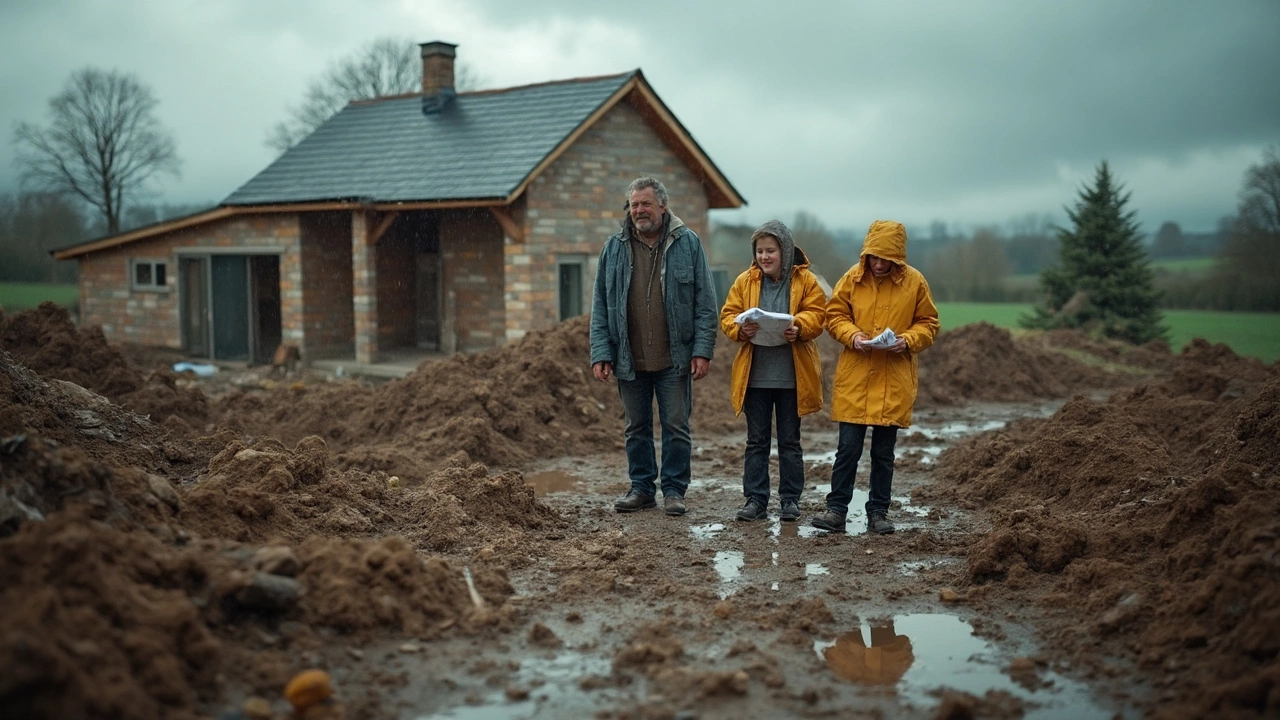The dream of building a house looks great on TV. Shiny floors, perfect kitchens, fresh paint—who wouldn’t want that? But, before you dive in, there are real downsides nobody brags about on Instagram. Most folks hit a wall with delays and unexpected problems the moment they start.
Think your house will be done in eight months? That’s the schedule builders love to promise. Reality check: bad weather, permit hold-ups, and supply chain issues can stack up fast. Suddenly, you’re still waiting months after your original move-in date, possibly paying rent and mortgage at the same time.
And then there’s the money side. You probably saved for the build, but most people still end up spending more than planned. Hidden costs have a way of popping up everywhere, and upgrades can sneak past your budget when you’re picking finishes. No one talks about these headaches until they’re right in the middle of them.
- Big Headaches with Delays
- Hidden and Rising Costs
- Decision Fatigue and Stress
- Dealing with Builders and Permits
- What Surprises Most People
Big Headaches with Delays
Everyone likes to think their new home will pop up right on schedule. But in the world of building a house, delays are the rule—not the exception. It’s almost like betting against the clock. The biggest offenders? Weather, permit snags, labor shortages, and waiting for materials. Ever heard of a house sitting half-finished because the windows are stuck at a port somewhere? That happened to thousands of people when global supply chains went sideways in 2021 and 2022. Even now, one missing part can stall an entire build for weeks.
Building inspections can slow things too. Cities usually need to sign off at many stages: foundation, framing, insulation, electrical, plumbing. One missed appointment or failed inspection means everyone goes on hold. You might even find yourself tracking down inspectors just to keep things moving.
Let’s talk about trades—the folks who do the real work. Good ones get booked months in advance, and if there’s a shortage (which happens often), your timeline slides even further. More than half of new home builds in the last few years ran over schedule for this exact reason.
- Before you sign a contract, ask every builder you interview about their average delay time, not just their best-case scenarios—some will be shockingly honest if you ask.
- Build some wiggle room into your own plans. Don’t base your moving date on the first estimate you hear. Give yourself at least 2-3 months extra just in case.
- If possible, get updates weekly from your builder, not just when you ask. It helps spot bottlenecks before they become disasters.
The truth is, unless you’re blessed with perfect weather, a team with nothing else on their calendar, and a city that fires through permits quick as lightning, expect delays. The good news? Knowing this up front might save you some stress—and a few grey hairs.
Hidden and Rising Costs
When you’re planning to build a house, the price you see on paper is almost never the one you end up paying. Builders love to give you a base price, but a lot of the good stuff is extra. If you want decent countertops, better flooring, or even more electrical outlets than the absolute minimum, you’ll probably get hit with upgrade charges. These add up fast—sometimes way faster than you think.
Material prices change all the time, too. Since early 2020, lumber prices have been all over the place—doubling or even tripling at times. The National Association of Home Builders reported that lumber hikes alone added more than $30,000 to an average single-family home price during the 2021 surge. And it’s not just lumber. Windows, drywall, and appliances have all seen price jumps. Here’s a look at how material costs can sneak up on you:
| Material | 2020 Price | 2023 Price |
|---|---|---|
| Lumber (per 1,000 board feet) | $370 | $750 |
| Drywall (per sheet) | $9 | $15 |
| Standard Window | $300 | $420 |
Then you have the sneaky costs nobody warns you about. Think permits, land surveys, hook-ups for electricity or water, or needing to re-grade your lot. Insurance and inspection fees? Those aren’t usually included in base prices either. Miss a detail on your contract? That change order fee isn’t going to be cheap.
If you want to avoid nasty surprises, keep an emergency fund. Most pros recommend setting aside at least 10-15% of your total project budget for these surprise costs. As the CEO of a large home builder said in an interview with CNBC:
"The biggest shock for our clients is how quickly changes and extra costs can add up in a construction project. Transparency upfront about allowances is key, but nobody can predict every bump in the road."
Bottom line: don’t trust the sticker price. Know your numbers, question every line item, and keep that rainy day fund ready. That’s how you dodge the worst shocks in building a house.

Decision Fatigue and Stress
Building your own place sounds awesome until you realize you have to make hundreds of choices—literally. It's not just big stuff, like the layout or siding color. You’ll end up picking door handles, light switches, faucet styles, cabinet knobs, grout color, and even how high the bathroom mirror hangs. By the time you choose the tile for the mudroom, your brain is fried. This is called decision fatigue, and it's way more draining than most people expect in the building a house process.
Researchers from Cornell University estimate we make around 226 decisions every day just about food. When you’re building, that number jumps sky-high—and many decisions feel permanent. Miss one detail, and you might be stuck with it for decades unless you pay to redo it later.
On top of this, stress kicks in from two sides. First, you want everything to be just right, and that pressure means even small choices feel huge. Second, the clock never stops ticking. Builders might bug you for your answers, and if you drag your feet picking things, it risks delaying the whole project.
A Consumer Reports survey found that 32% of people who built new homes said the most stressful part was "making decisions about the details." That’s more than those who worried about delays or dealing with contractors.
| Stress Factor | Percent Reporting |
|---|---|
| Choosing finishes/details | 32% |
| Delays | 29% |
| Dealing with contractors | 21% |
| Budget surprises | 15% |
| Other | 3% |
The best way to deal with decision fatigue? Before you even begin, make a "must-have" and "deal-breaker" list. Have a folder of inspiration pics or saved links to your favorite styles. Handing these to your builder helps speed things up and saves your nerves. Also, pace yourself. Tackle groups of decisions in batches, take breaks, and ask for samples to see things in person. It really helps to bring in a designer or a super-organized friend if you start feeling stuck.
Dealing with Builders and Permits
This part of building a house throws a lot of people for a loop. You’re suddenly juggling meetings, phone calls, and tracking approvals—all while trying to understand builder lingo that might as well be a different language. One wrong move, and you can delay your build by weeks just waiting for a signature or updated paperwork.
Builders are not all created equal. Some are total pros, but others cut corners or are just terrible at communication. It’s not rare to see issues pop up, like poor workmanship or deadlines that keep slipping by. If you ever drive past a half-built house just sitting there for months, there’s a good chance someone’s stuck in a battle with their builder or waiting on a permit.
You also have to wrestle with local government for permits. These are supposed to keep houses up to code, but they can be painfully slow. In places like Los Angeles, getting full approvals for building a house can stretch from three to six months, even if everything is in order. In some rural counties, a single missing form can set you back just as far.
Check out some average timeframes for getting building permits in different US cities:
| City | Average Permit Review Time |
|---|---|
| Los Angeles, CA | 3-6 months |
| Austin, TX | 2-4 months |
| Orlando, FL | 1-2 months |
| Seattle, WA | 4-7 months |
Tips to make this easier? Never take your builder’s word as gospel—check reviews and ask to see completed homes. Always double-check what documents the city wants for your build, and don’t be shy about calling the permit office every week. If your builder says, “We’re waiting on approval,” don’t just nod—ask for proof. And get every promise in writing.
- Interview at least three builders, and ask for references you can call.
- Read the fine print on your contract (down to the smallest clause about delays or extra fees).
- Hire someone familiar with local permit rules—this can save you many headaches.
- Don’t forget: Communication is king. Weekly check-ins with your builder keep everything on track.
This stage is all about keeping your eye on the ball. If you drop it, your dream house can become a stress test you didn’t sign up for.

What Surprises Most People
This is where things get real. Ask anyone who’s gone through building a house—there’s almost always a curveball. Probably the biggest shock? How much time you’ll spend stressing about tiny stuff you didn’t even know existed. Like, did you ever think you’d care so much about where a light switch goes or which way a closet door swings? Welcome to home-building reality.
A huge surprise for most people is how many decisions you have to make, and how quickly you have to make them. There’s a point where it feels like you’re being asked to pick something every single day. Miss a deadline and you might push the whole project back by weeks. It’s exhausting. According to the National Association of Home Builders, the average custom build takes over 20 months from start to finish. That’s about double what most folks imagine at the start.
Then there are site surprises. Sometimes, you dig the first hole and find out the ground isn’t as solid as expected, or there’s a drainage problem that blows up your budget. One study from the U.S. Census Bureau found about 13% of new homes faced major site or foundation issues during the build. It’s the stuff behind the walls or under the ground that’ll mess with your plans the most.
"What’s behind the drywall is what’ll keep you up at night—and cost you the most," says John Bowers, a home builder with 25 years in the business.
People also get caught off guard by regulation and inspection hiccups. Inspectors can fail something minor, putting your entire timeline at risk. That’s not rare—according to a 2023 survey by Houzz, 28% of homeowners building new houses ran into permit or inspection delays.
If you want to avoid the worst surprises, keep these things in mind:
- Track your decisions and approval dates in a simple spreadsheet.
- Ask for building a house checklists from your contractor.
- Get soil and land surveys done before you finalize the purchase.
- Plan for at least 10-15% over your original budget, just in case.
Here’s a quick snapshot of how common these surprises actually are:
| Issue | % of New Builds Affected |
|---|---|
| Major delays (2+ months over schedule) | 43% |
| Permit/Inspection problems | 28% |
| Site/foundation issues | 13% |
| Budget overruns (10%+ over original) | 54% |
So yeah, the glossy finish comes with plenty of surprises. Knowing what might pop up can keep you from being totally blindsided.

Author
Damon Blackwood
I'm a seasoned consultant in the services industry, focusing primarily on project management and operational efficiency. I have a passion for writing about construction trends, exploring innovative techniques, and the impact of technology on traditional building practices. My work involves collaborating with construction firms to optimize their operations, ensuring they meet the industry's evolving demands. Through my writing, I aim to educate and inspire professionals in the construction field, sharing valuable insights and practical advice to enhance their projects.